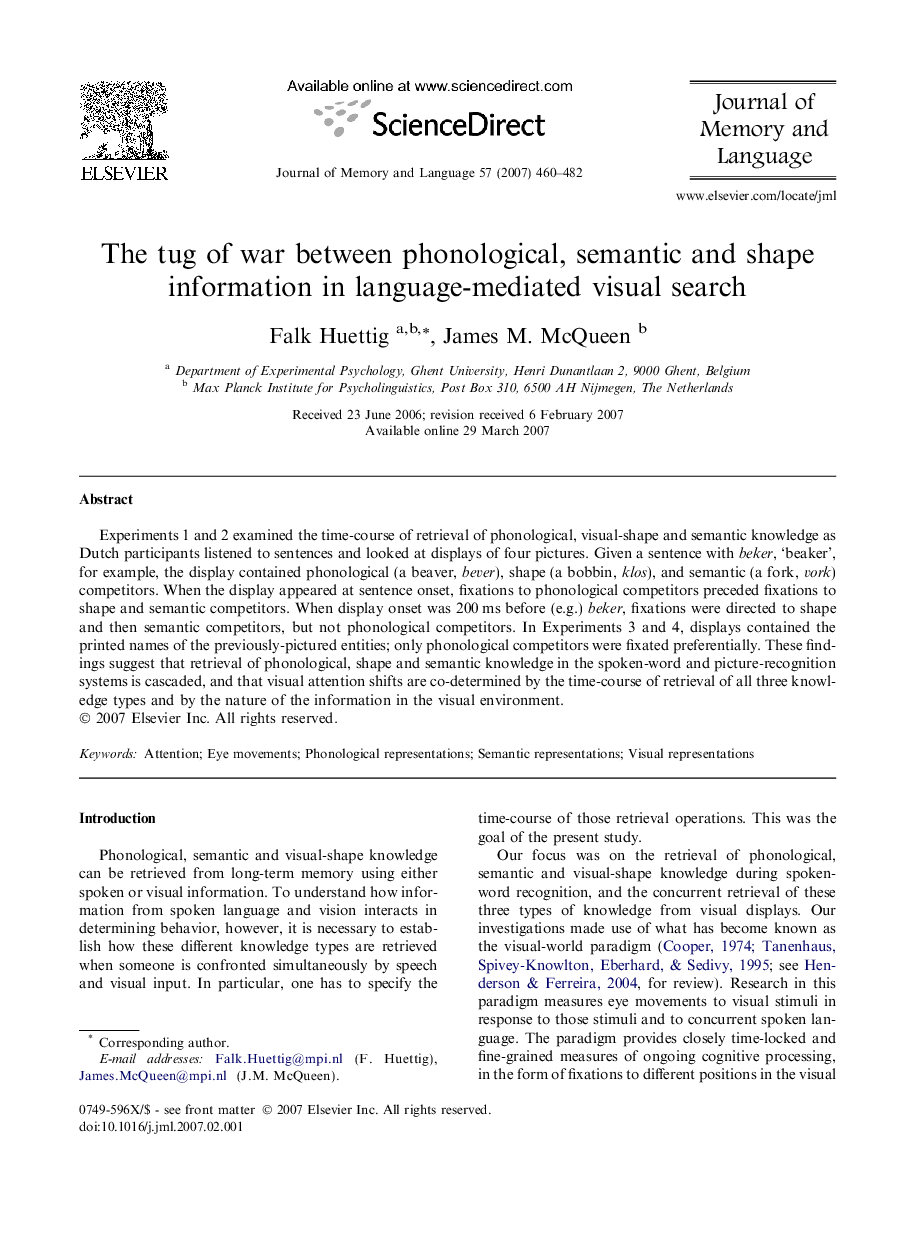| Article ID | Journal | Published Year | Pages | File Type |
|---|---|---|---|---|
| 932375 | Journal of Memory and Language | 2007 | 23 Pages |
Experiments 1 and 2 examined the time-course of retrieval of phonological, visual-shape and semantic knowledge as Dutch participants listened to sentences and looked at displays of four pictures. Given a sentence with beker, ‘beaker’, for example, the display contained phonological (a beaver, bever), shape (a bobbin, klos), and semantic (a fork, vork) competitors. When the display appeared at sentence onset, fixations to phonological competitors preceded fixations to shape and semantic competitors. When display onset was 200 ms before (e.g.) beker, fixations were directed to shape and then semantic competitors, but not phonological competitors. In Experiments 3 and 4, displays contained the printed names of the previously-pictured entities; only phonological competitors were fixated preferentially. These findings suggest that retrieval of phonological, shape and semantic knowledge in the spoken-word and picture-recognition systems is cascaded, and that visual attention shifts are co-determined by the time-course of retrieval of all three knowledge types and by the nature of the information in the visual environment.
